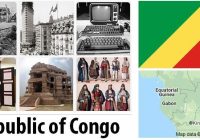Republic of the Congo Old History
Republic of the Congo is an independent nation in Central Africa. With the capital city of Brazzaville, Republic of the Congo 2020 population is estimated at 5,240,011 according to countryaah. During the 13th and 13th centuries, the bantu people migrated to Congo, Teke and Vili into what is today Congo-Brazzaville. Back then, pygmies lived in… Read More »
